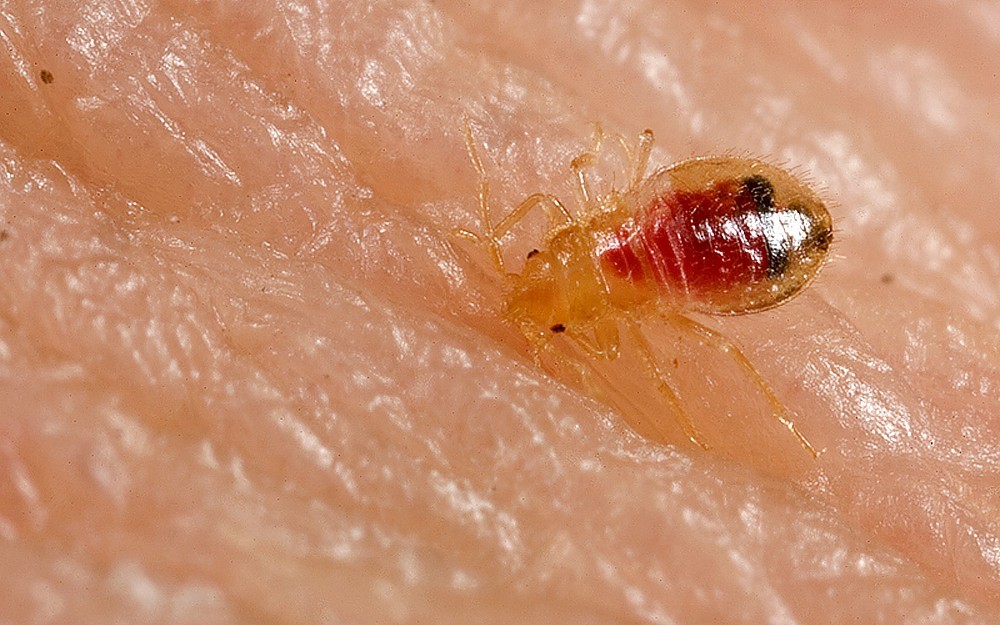
UC HEALTH LINE: Mosquito Bite or Bedbug Bite ... How to Tell?
CINCINNATIIts officially summertime and insect bites are no picnic, but some insectsnamely the bedbugdont care what time of year it is and bedbug bites are often mistaken for bites made by other summertime pests, like the mosquito. However
"If you have not been outdoors at all and you are waking up in the morning with bites, bumps or a rash there is a possibility of bedbugs to consider, says Andrew Smith, MD, a UC Health allergist and assistant professor of medicine in the University of Cincinnatis College of Medicine.
According to the Centers for Disease Control and Prevention (CDC) and pest control experts, bedbug infestations are currently a mainstream concern among the U.S. population. The concern has resurfaced after almost two decades of absence, due to many factors including the banning of pesticides like DDT, which once killed the bugs off, and increased global travel to areas where bedbugs are commonplace.
Bedbugs are "hitchhikers, stealthy little insects that can be as tiny as a grain of rice or grow as large as an apple seed and bite when people least expect it
when they are sleeping. The bugs are mostly nocturnal and most often hide close to areas of rest such as in the seams of mattresses and box springs, alarm clocks, laundry baskets or electrical outlets. The bugs feed on human blood for survival, just like the mosquito.
The individual bedbug bite, Smith says, looks much the same as a mosquito or flea bite with the only discerning identifier being that bedbugs tend to bite in a three-bite straight line, which is often referred to as "breakfast, lunch and dinner.
The size of the bite, he says, can range from unnoticeable to tiny to a raised area swelling to the size of a CD, depending on the skin sensitivity of the person being bitten.
The reason for the range of skin reactions, Smith notes, is because its not the puncture itself that causes the irritation; its the skins dermatological reaction to the blood thinner and pain killer that the bug injects in order to accomplish its mission: to sneakily suck blood as a food source.
"It can vary quite a bit from person to person. Two people can be sleeping in the same bed, one gets red and itchy and the other has no evidence of being bitten, Smith says, adding that medical attention can be necessary if an extreme allergic reaction occurs or if scratching leads to infection. However, the most common treatment for bites is an anti-inflammatory cream containing cortisone.
The number and frequency of bites depends on the extent of the infestation, experts say, and bedbugs can go weeks without feedingby which time they have multiplied and will again be looking for a food source.
Whether you have bedbugs biting you to irritation and how to get rid of them, Smith says, is a dual process of medical attention and household inspection by a pest control company, but common sense should also prevail before panic: "If your child has been playing outside all day and you notice bites, then thats likely something different.
Smith sees patients for both UC Health and the Bernstein Allergy Group. He treats patients across the entire spectrum for allergies including skin reactions, breathing problems, nasal and sinus issues and food and drug allergies.
If you believe you have unexplained bites that need medical attention or would like to see a UC Health allergist for another allergy-related condition, call 513-584-4061.
Related Stories
Spectrum News: Student-led organization empowers patients with...
April 29, 2024
Spectrum News highlighted the work of UC student Mallika Desai and the student group Parkinson's Together that takes a multidisciplinary approach to meeting the needs of patients with Parkinson's disease in their community.
UC students recognized for achievement in undergraduate research
April 29, 2024
The University of Cincinnati recognizes undergraduate student researchers for outstanding achievement in the sciences and humanities.
Hoxworth celebrates May blood donors with trendy tumbler gift
April 29, 2024
Hoxworth celebrates May blood donors with a trendy tumbler gift.
